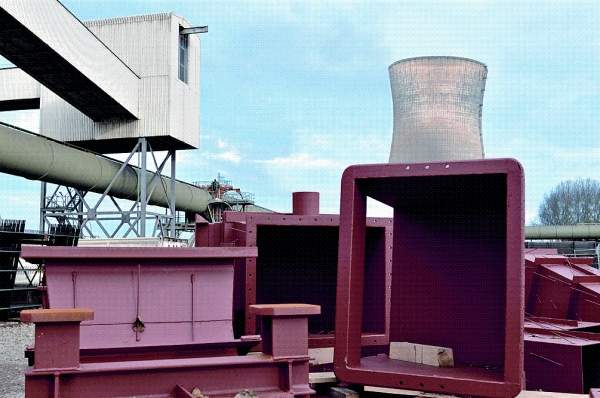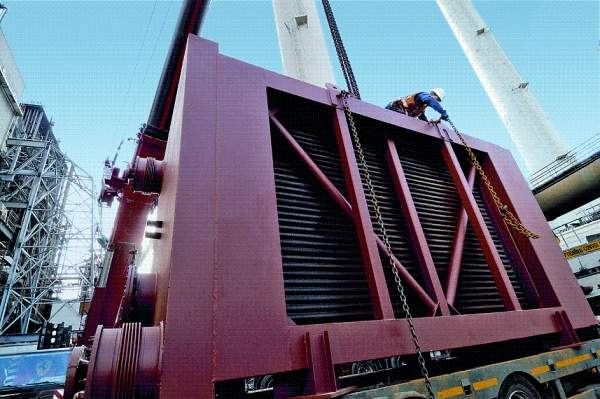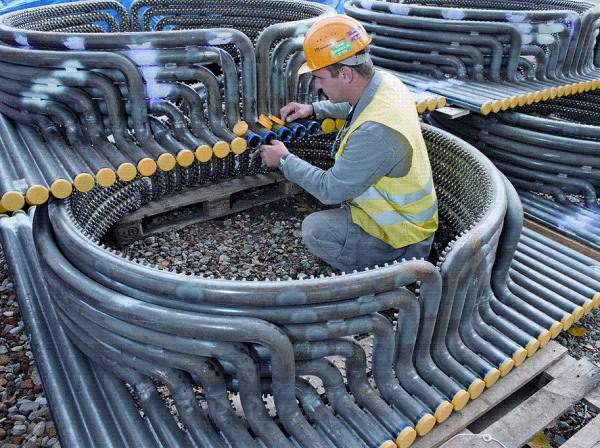Rodenhuize power station is an 180MW biomass-fuelled plant located in Ghent, Belgium. The plant was converted from a coal-fired unit called Rodenhuize 4 into a 100% biomass unit.
Opened in September 2011, the converted unit can generate enough electricity to power 320,000 homes. A total of €125m was invested into the project.
The plant offsets about 1.2 million tons (mt) of carbon dioxide emissions a year.
A joint venture (JV) called Max Green was established to execute the project. GDF SUEZ subsidiary Electrabel owns 73% in the JV, while the remaining is owned by Ackermans & van Haaren.
Conversion of the Rodenhuize plant was one of the initial projects undertaken by Max Green. Renewable energy is currently more expensive than conventional sources and costs more for consumers.
The technology adopted by Max Green produces energy at a cost comparable to that of conventional sources.
The plant had to be closed in the first quarter of 2014 because it could not obtain green certification for 2014-2016, as the wood suppliers to the plant denied to furnish the mandatory declarations for granting the certificate.
Following Electrabel’s discussions with the suppliers and the Flemish government, a resolution was reached in September 2014, which allowed the plant’s operations to be resumed.
Rodenhuize power plant history and details
Rodenhuize 4 was originally developed as a coal-fired power plant. It included a blast furnace which used gas, heating oil and coal to generate electricity.
The plant was modified in 2005 and 2008 to enable generation of electricity from both coal and biomass. Conversion of the plant to completely replace coal with biomass formed the last part of the modifications works.
Development of the 180MW biomass fuelled plant
The project was proposed in 2009. Conversion of the plant began in 2010 with coal usage ceasing in January 2010. The last phase of conversion process started in August 2010 and included the majority of the construction works.
Bilfinger Berger Power Services was responsible for conversion of the plant. The company was responsible for construction, installation and commissioning of the plant. Rodenhuize plant is Bilfinger’s first biomass plant of this size.
Electrabel required a boiler that not only burns biomass but also natural gas and blast furnace gas to generate electricity in the future. Bilfinger examined various scenarios using computer simulations to ensure nitrogen oxides emissions are complied with.
Dimensions of various components of the plant including ventilation ducts and steam generation components were reworked to ensure a practicable solution is found. Burners had to be adopted to bear the mechanical stress produced by hardwood dust. They were fitted with heat and corrosion-resistant ceramic plates to address this problem.
Rodenhuize power station specifications
The plant includes 24 burners to operate with biomass, 12 new blast furnace gas burners, a gas preheater, ventilation ducts, four hammer mills and a burnout air level module, which minimises emissions by adding air.
Wood pellets required by the facility are provided by certified producers who use sustainable forestry. The pellets are verified by an independent body to ensure they are of sustainable origin.
The woodchips storage and handling system includes a dedusting installation, sprinkler, spark and smoke detection and humidity measurement equipment. Wood is stored in 2,000m³ silos and transported through two conveyor belts for processing.
The wood pellets pass from the silos to processing area where they are sifted and transported to hammer mills. The pellets are ground to a fine dust in the mills and transported to the burners by pneumatic transportation.
Approximately 30% of the wood pellets required by the plant come from the Pacific BioEnergy’s production facility situated in British Columbia, Canada. The pellets arrive by boat to the port of Ghent, from where they are transferred to the plant.
Electrabel has signed a long-term agreement for the supply of 225,000t of biomass a year to the plant.
Contractors with a role in the Belgian power plant
Laborelec carried out a computational fluid dynamics assessment to identify the burner configuration at the plant.
Geldof Metaalconstructie was responsible for construction and installation of the woodchips storage and handling system at the plant. Hamon supplied electrostatic precipitators for the plant.
Max Green was established to implement renewable energy projects based on biomass. The Rodenhuize biomass project is aimed at helping Belgium fulfil its national action plan for renewable energy, in particular, biomass.
The plan aims at generating 20% of energy consumed to be generated from renewable sources by 2020.






